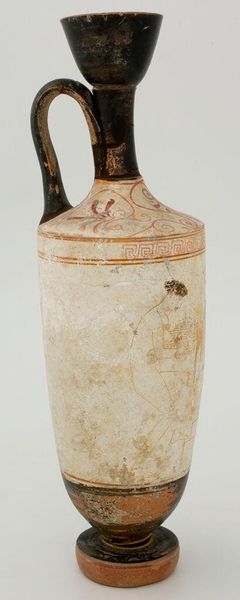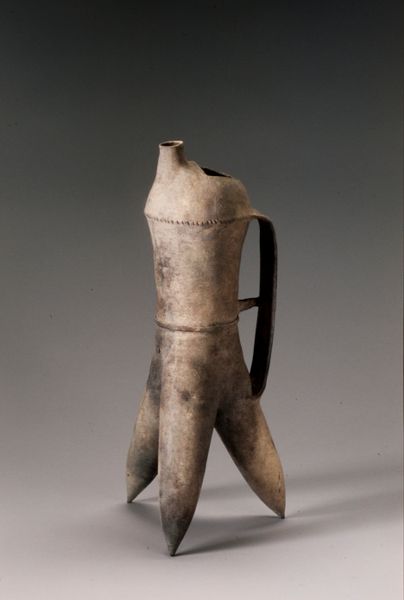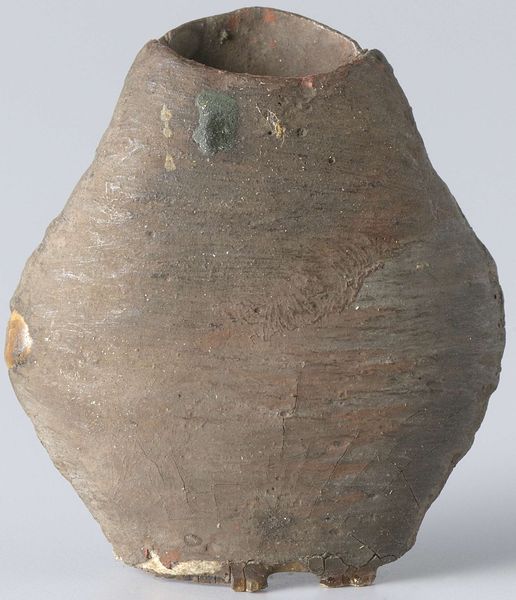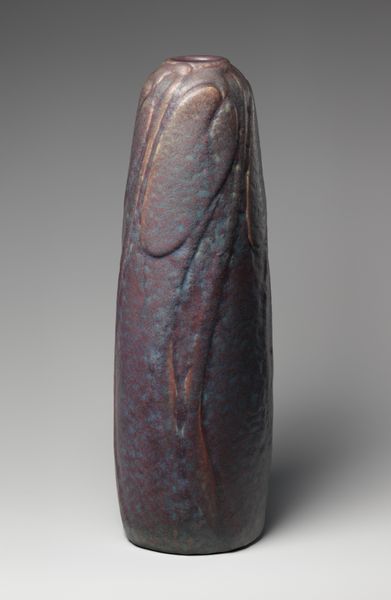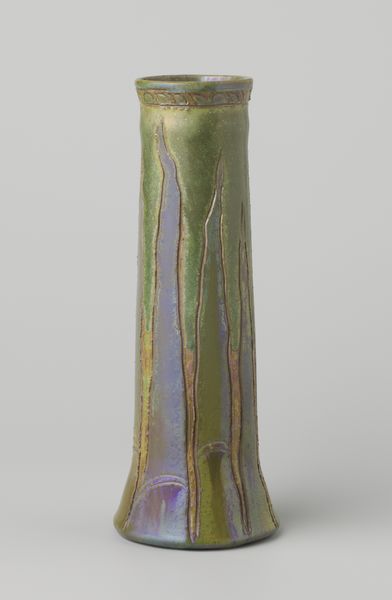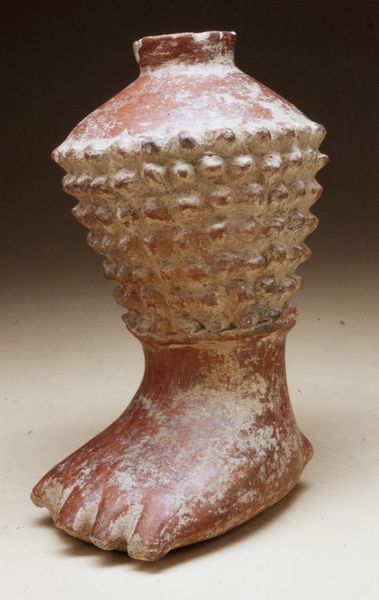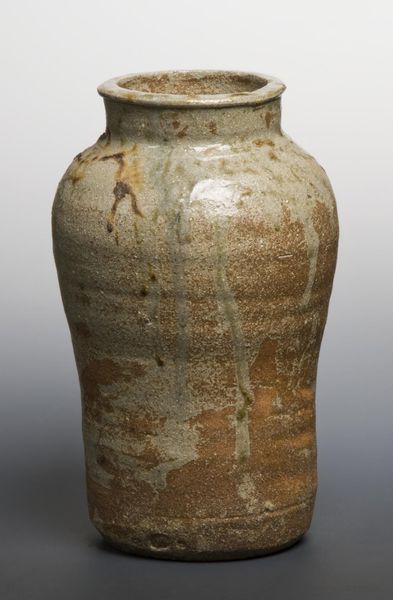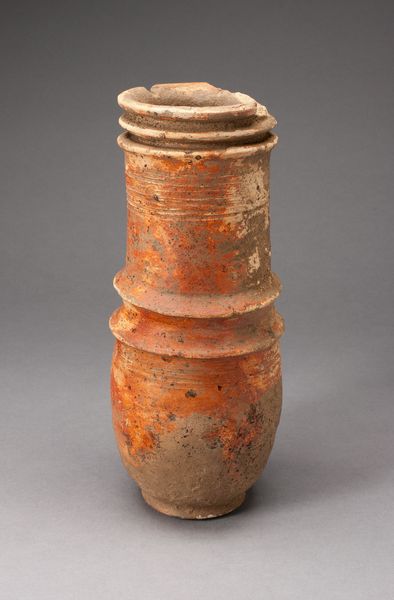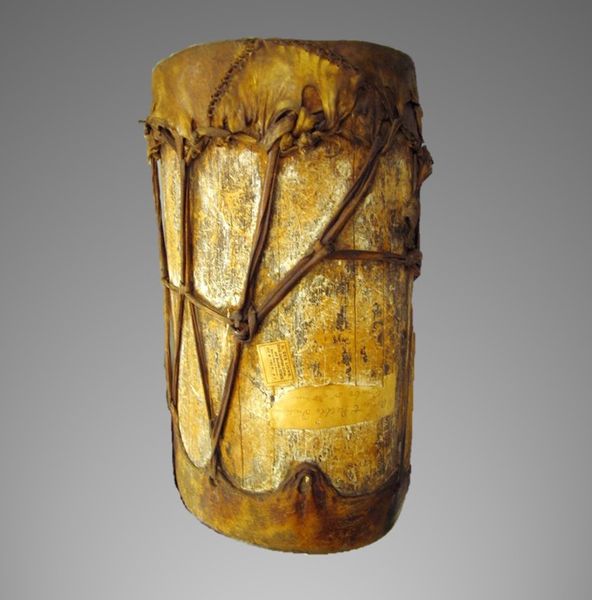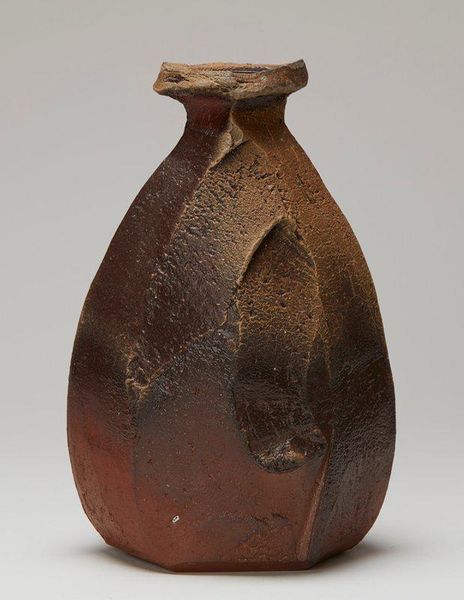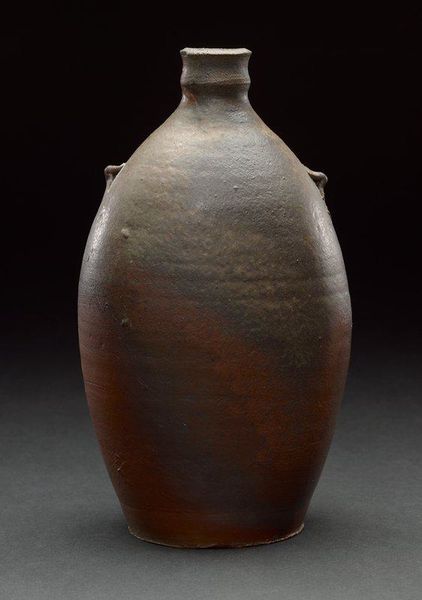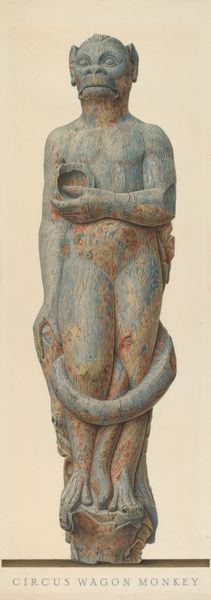
ceramic, bronze, sculpture
#
organic
#
art-nouveau
#
ceramic
#
vase
#
bronze
#
geometric
#
sculpture
#
ceramic
#
decorative-art
Dimensions: 10 x 4 1/8in. (25.4 x 10.5cm)
Copyright: No Copyright - United States
Hugo C.M. Elmquist made this vase with metal, most likely copper, and some patinas, but I’m not sure when. There's something super tactile about this vase that gets me thinking about the physical interaction between the artist, the metal, and the applied patinas. Look at the way the leaves and insects are not just painted on but seem to emerge from the surface, like they're growing out of the metal. It’s pretty cool how Elmquist used what looks like a combination of carving and applying the metal to build up these textures. I'm drawn to the color, a sort of burnished, earthy tone. But it is not just one color, there’s depth. I love how you can see the hand of the artist in the slight imperfections, giving it a kind of warmth and intimacy. It reminds me of the Arts and Crafts movement, where the process is part of the story and the beauty. I am thinking of William Morris, but with bugs! Anyway, it all just seems like one big conversation, right?
Comments
minneapolisinstituteofart almost 2 years ago
⋮
The impact of Charles Darwin's Theory of Evolution on the decorative arts at the turn of the century has yet to be fully researched and examined. It was to have a tremendous influence on a wide variety of artists throughout Europe. One such example is this bronze vase by Hugo Elmquist on which a beetle and trailing vine are faithfully rendered life-size in applied relief. In the 19th century, the ramifications of morphology and the history of organic evolution were a sphere which involved the artist through the medium of scientific illustrations. Darwin's controversial theories reawakened a new-found appreciation for the infinite variety and complexity of natural forms, and thanks to him, the morphology and historical development of organisms was a field which also concerned the interested layman. Many artists openly expressed a desire to uncover the infinite treasures hidden beneath the sea or visible only under a microscope. Many of these artists became extremely knowledgeable and astute observers of nature as did Émile Gallé and Louis Comfort Tiffany in the plant kingdom and John James Audubon in the study of birds.
Join the conversation
Join millions of artists and users on Artera today and experience the ultimate creative platform.
